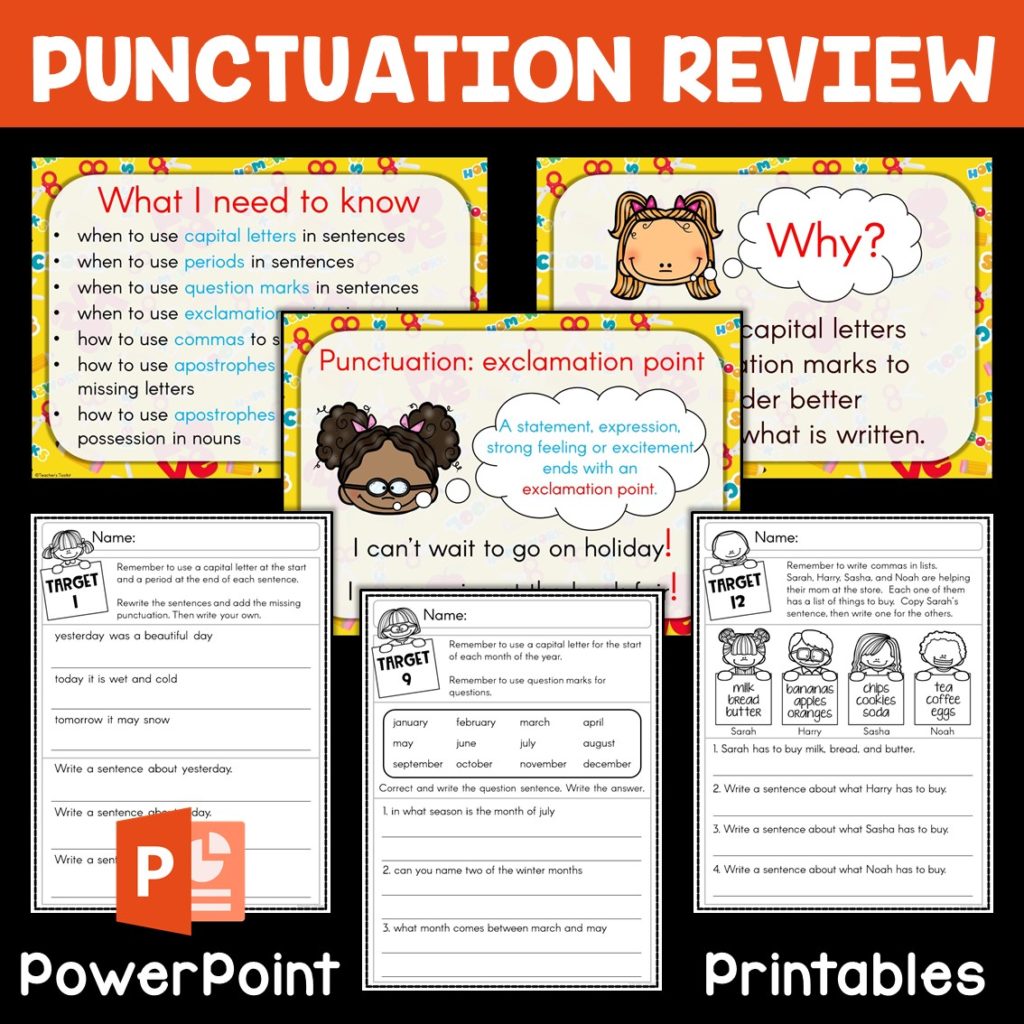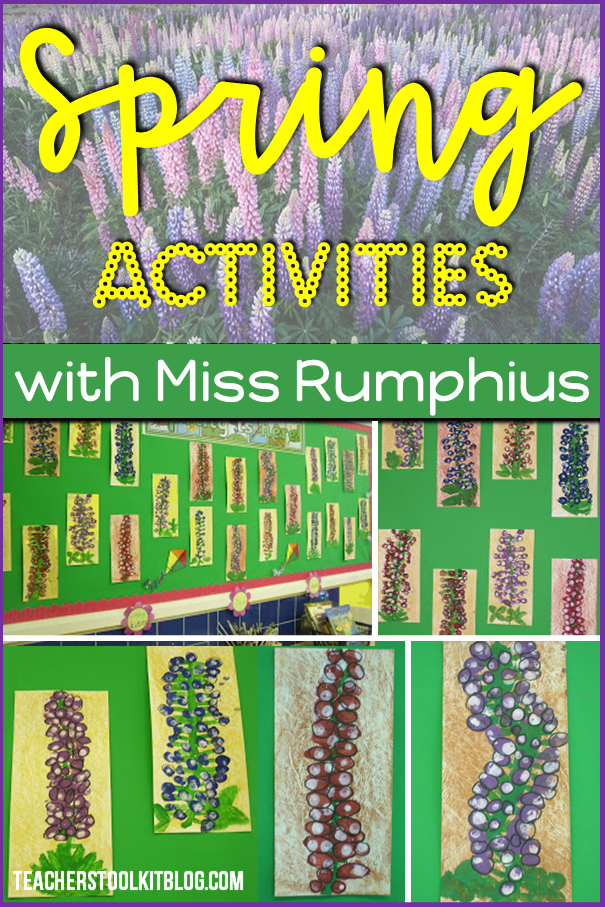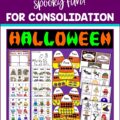Reading and writing without punctuation is like having an ice cream sundae without the ice cream! Maybe that’s a bit over dramatic, but as teachers we know that emerging readers and writers need to become aware of and able to correctly use punctuation. But teaching about punctuation doesn’t have to be boring. These fun ways to teach punctuation will have your students becoming masters in no time.
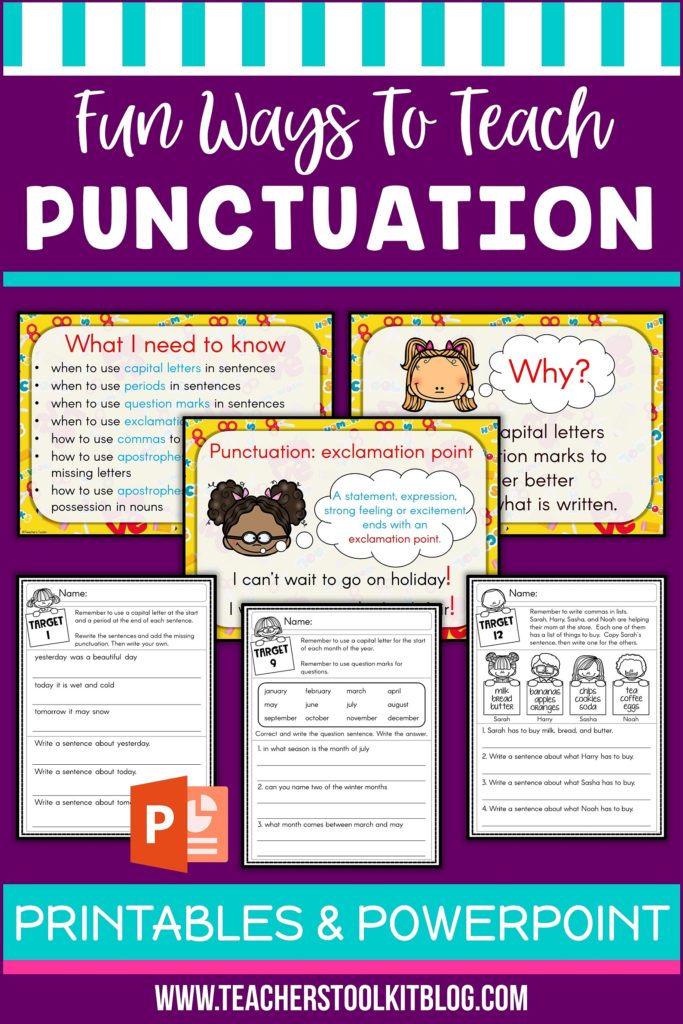
Without using the necessary commas, periods, exclamation points, and question marks students won’t be able to read with expression or understand much of what they read. When writing, using the correct punctuation ensures that the intended meaning is conveyed.
So we know that punctuation is important. But how can we teach it in a way that gets kids excited and engages them so that they want to practice?
Fun Ways to Teach Punctuation
Choose the Proper Punctuation Game
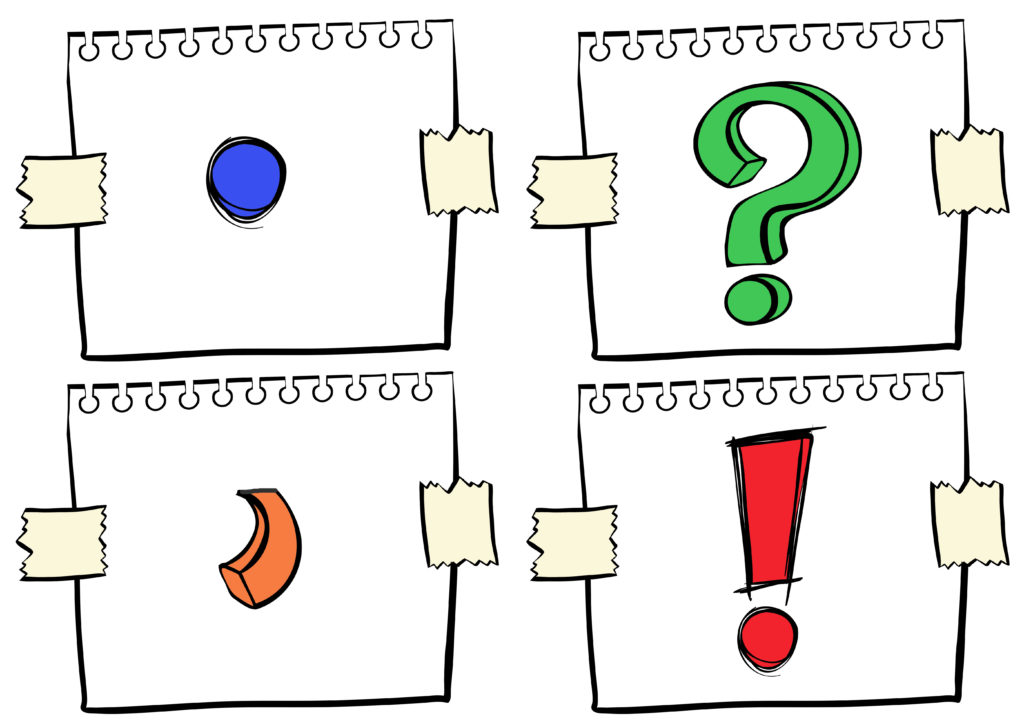
One simple way to help your students practice choosing the correct punctuation mark is Punctuation Pop-Up. Give each student a set of punctuation flashcards attached to a craft stick. They will need one for each punctuation mark you are going to cover. I would suggest starting with a question mark, comma, period, and exclamation point.
Next, read some simple sentences out loud. Use the correct inflections and clear pauses to help the students identify which card is correct. The students will then pop up the card with the correct punctuation mark by holding it up. Here’s a little tip – if you want to use this activity as an informal assessment to see where your students are, have them hold it up right in front of their chest instead of high in the air.
Here’s some simple sentences you might use:
- What a cute puppy!
- Did you eat lunch yet?
- This apple is red.
- For breakfast I had toast, orange juice, and eggs.
Punctuation Pasta
A fun activity that will really make students want to use punctuation in their writing is this sensory bin “Punctuation Pasta.”

For the sensory bin, you’ll need colored pasta. Use elbows for the commas, small tube pasta (Ditalini) for the periods, ziti and Ditalini together for the exclamation points, and large elbows with Ditalini for the question marks. With these pasta shapes you can also make semi-colons and colons if you have more advanced students.
Here’s how to color the pasta. You’ll need separate plastic baggies for each type. Into each baggie put 10 – 15 pumps of hand sanitizer and 30 or 40 drops of food coloring. It sounds like a lot of food coloring, but this will give you nice, bright colors.
Pour the pastas into the baggies and mix and shake it until it’s well-colored. Then spread it out on parchment paper or covered cookie sheets to let it dry, which only takes 2 or 3 hours.
Pour all the pretty pasta into a bin, or distribute it out among your students.
Now comes the fun part!
Have students write a story, or some simple sentences. They’ll glue down the correct pasta shape for the punctuation mark wherever it should go on their paper. The pasta will provide great visual cues for the students when they read it out loud.
Have the students exchange their papers and read each others’ sentences using the marks. Challenge them to use the correct voice inflections and tones as they read.
Funny Punctuation Memes
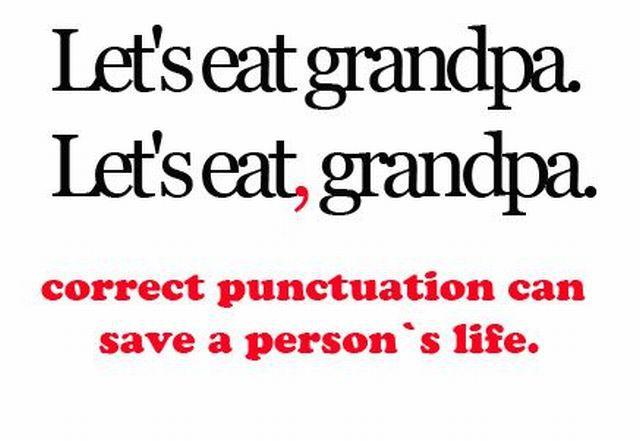
Don’t forget memes! There is a ton of “funny punctuation memes” online. Many of them are appropriate for young students. It would be fun to project some of these on your screen and laugh about how the meme sounds without the right punctuation marks. It can really showcase how important these marks are!
After looking at some memes challenge students to write their own. Have them write one sentence and then change its meaning based on what punctuation mark they choose or where they put it.
Punctuation Practice
I have put together a fun punctuation review packet which is perfect for whole class review and student practice. In this packet there is a powerpoint presentation that is designed for whole class review. This presentation covers both capitalization and punctuation. You can use it all together or use it at two different times if you teach the concepts separately.
After using the powerpoint as a review, students can then practice the skills with the included extension passages that need correcting. This takes the punctuation practice from sentence and into extended language. The students love the challenge of finding all the mistakes. This packet includes some practice pages for specific skills and some mixed skill practice.
You can see everything this packet includes in this short video:
I’d love to know fun ways that you teach punctuation to your students. Leave a comment and share!

